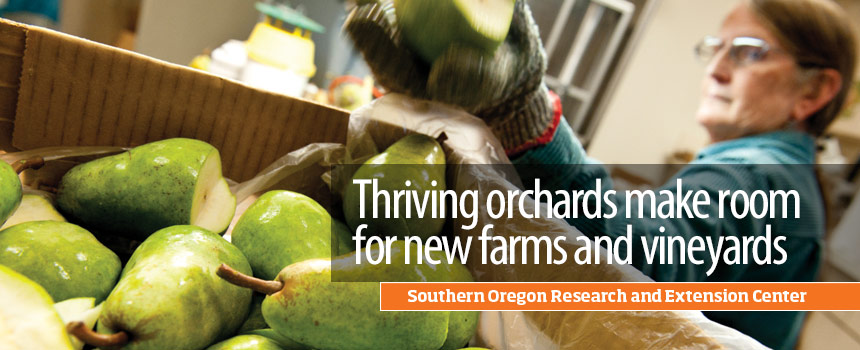Shifting landscapes of pest management

Imagine a giant jigsaw puzzle whose pieces are always changing shape. That’s an apt analogy for the challenges faced by OSU’s integrated pest management (IPM) team in the Rogue Valley.
“New insects show up all the time, threatening crops and disrupting the balance of the ecosystem. Our efforts try to suppress pests in an environmentally harmonious way while not hindering growers,” said Rick Hilton, an OSU entomologist. “It’s like fitting together the pieces of a complicated, ever-shifting puzzle.”
[caption caption="Imagine a giant jigsaw puzzle you can never fully solve because the pieces are always changing shape. That's an apt comparison to the challenges faced by farmers in Oregon, who confront ongoing threats from invasive species."] [/caption]
[/caption]
The puzzle includes shifting populations of established pests, like the codling moth, and newly arrived pests, like the spotted wing drosophila and brown marmorated stink bug. Hanging in the balance are staples of the regional economy, such as pears, wine grapes, and peaches.
IPM tracks the complexity of who eats whom, and where, and when, and what to spray on what, and when, and so on. To support an integrated approach that offers alternatives to toxic chemicals, OSU researchers test pheromones to disrupt mating patterns, kaolin clay to protect developing fruits, and known predators that attack harmful pests but avoid beneficial bugs.
To carry this research from the laboratory to the orchard, OSU works cooperatively with southern Oregon farmers to test pest protection methods. When possible, OSU also guides growers away from highly toxic sprays and towards more sustainable IPM approaches.
“The way we look at pesticides is changing. The way we produce fruit is changing. The nature of orchards is changing; and so is IPM,” said Hilton. “We can’t think one approach will work forever. We have to look to the future and keep new things in development all the time.”

